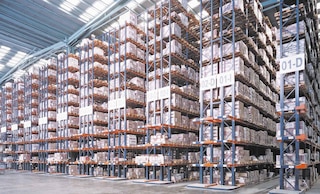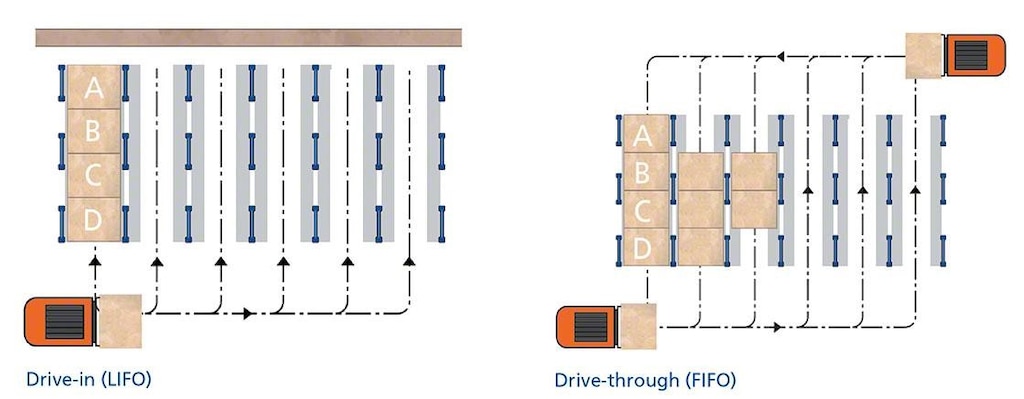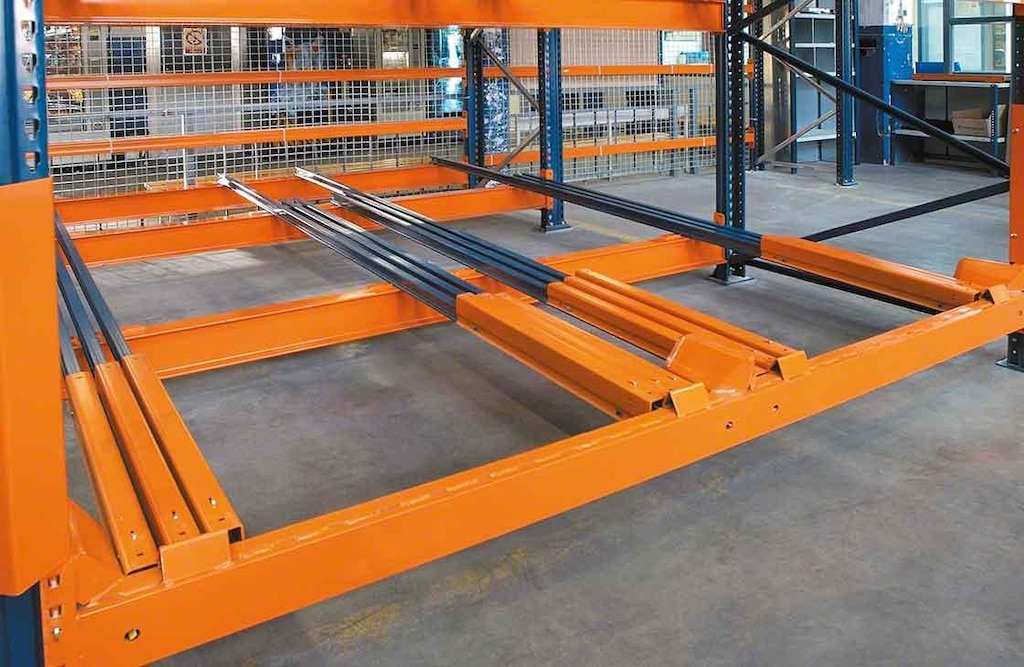
Industrial rack types for warehouses
Racks are metallic structures on which the unit loads are set, i.e., either boxes or pallets. There is a massive variety of industrial rack types that provide solid storage for products of a very diverse nature. Let's take a closer look at the main types of industrial racking:
1. Industrial pallet racks
With pallet racking, goods are accessed directly through the aisles and each pallet, tote or container occupies a space, so keeping track of stock is less complex compared to other systems.
Standard pallet racks are the most versatile option. Pallet racks are ideal for storing very different types of SKUs, as the racks adapt to sizes, spaces and weights.
On the other hand, the longspan shelving for picking to hold boxes, totes or smaller unit loads can also be moulded to the pallet rack system and are customisable through accessories if you need to handle products with special formats such as tires or spare parts.
2. Drive-in pallet racks
Drive-in/Drive-thru or accumulative storage systems are based on lanes formed inside the racks where handling equipment such as forklifts or stackers are driven into to deposit or extract pallets. In this way, the load is in parallel and can be placed in the different available height levels from the same inner lane.
There are two different high-density storage systems:
- Drive-in/Drive-thru pallet racks… the most commonly used. In this case, there is only one access aisle for the forklift and they work as per the LIFO storage strategy, the last pallet to enter is the first to exit. It is used for non-perishable goods.
- Drive-thru racking: drive-through systems are installed leaving an aisle at the front and back so that the handling equipment can maneuver at both sides. In this way, you can operate using FIFO, the first in is the first out, widely used when products are perishable.

The main advantage of high-density shelving is that it doubles storage capacity compared to a standard rack system both in height and surface. However, they should be chosen when you store homogeneous products: each lane should have the same kind of SKU and have a low or medium rotation.
-Live racks and push-back racks
This is a variant of an accumulative storage system. The recipe for success for this racking type is that it uses the force of gravity to speed up loading and unloading times.
FIFO live racks
Live racks respond to the need to track a stock turnover that follows the FIFO criterion (first in, first out) down to the letter.
The racking’s rails are slightly inclined so that the palletised goods are inserted into the upper part and moved towards the lower end thanks to the rollers, the exit point from which the load is retrieved by the handling equipment. For this reason, these racks are arranged as islands with aisles around them, as both sides are used to store and extract pallets. This system is widely used in perishable-goods warehouses.
On the other hand, it should also be noted that this same strategy is also applied to picking, when dealing with smaller loading units such as boxes or containers. In this case, we are talking about carton live storage for picking.
Push-back racks (LIFO)
Push-back pallet racking also use the power of gravity to operate, with the difference that pallets are deposited and picked up from the same end of the structure.
Each level of the shelving has a trolley with bearings attached to the beams. This makes it easier to push the load to the rear once a new pallet is inserted and, when removed, the rest slide in a controlled manner towards the front of the rack. This modification makes it possible to operate with the LIFO system and average stock turnover levels.

- Industrial mobile pallet racking
If the warehouse has palletised products with medium or low turnover rates, a solution can come in the form of Movirack pallet racking, our mobile racking system.
This type of racking has a motorised base that facilitates lateral movement on rails on the floor. Thus, it saves aisle space and still giver you direct access to pallets.
3. Cantilever racking for bulky products
Behind the name “cantilever” is the ideal shelving for housing your long or bulky products. They are formed by steel posts with arm-like bracket sticking out from them, which are capable of holding light, medium or heavy loads.
In short, the type of industrial racks you should choose for a warehouse depends on many different factors, such as the characteristics of the goods, their turnover or the warehouse’s dimensions, among others. If you are looking for the racking that a great fit for your warehouse, contact us and a Mecalux expert will give you personalised advice. More than 50 years of experience guarantee our reliability as a storage system supplier.
